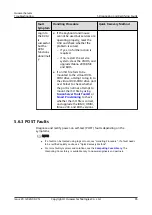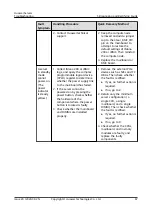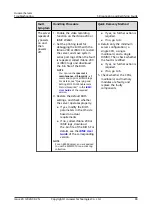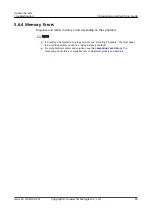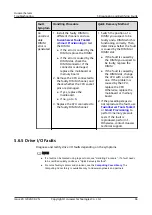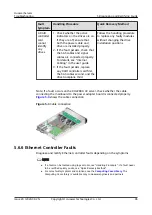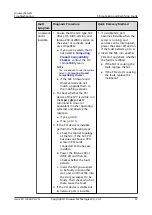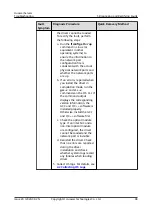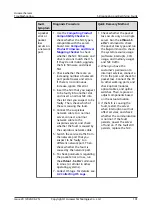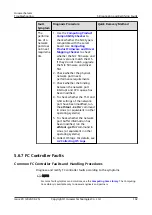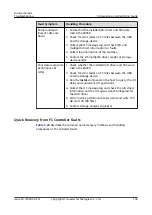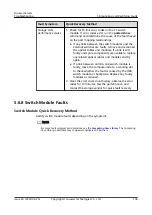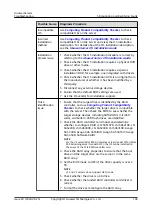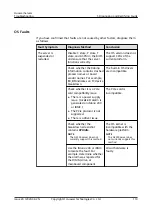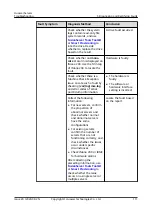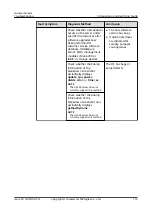
Fault
Symptom
Diagnosis Procedure
Quick Recovery Method
A network
port is
invisible.
1. Ensure that the NIC type, NIC
driver, OS, BIOS version, and
iMana 200 or iBMC version on
the server or compute node
are compatible.
● If you use a system that is
, contact the OS
compatibility team.
NOTE
You are advised to use the system
listed in
● If the NIC firmware and
driver versions do not
match, upgrade them to
the matching versions.
2. To check whether the PCI
device of the NIC is visible, run
the lspci | grep -i eth
*
command in Linux (or
equivalent in other operating
systems) and observe the
response.
● If yes, go to
.
● If no, go to
3. If the PCI device is invisible,
perform the following steps:
a. Check the logical topology
of the NIC. If the NIC PCI
bus does not have a CPU,
screw-in PCI cards
connected to the bus are
invisible.
b. Power the iMana 200 or
iBMC off and then on.
Check whether the fault
persists.
c. Insert the NIC you suspect
to be faulty into another
slot, and a normal NIC into
the slot you suspect to be
faulty. Then check which of
these cause the fault.
4. If the PCI device is visible but
its network port is invisible,
1. If a visible NIC port
becomes invisible when the
server is running, and
services can be interrupted,
power the server off and on.
If the fault persists, go to
.
2. Insert the NIC into another
PCIe slot and check whether
the fault is rectified.
● If the NIC is causing the
fault, replace the NIC.
● If the PCIe slot is causing
the fault, replace the
mainboard.
Huawei Servers
Troubleshooting
5 Diagnosing and Rectifying Faults
Issue 20 (2020-09-25)
Copyright © Huawei Technologies Co., Ltd.
97



